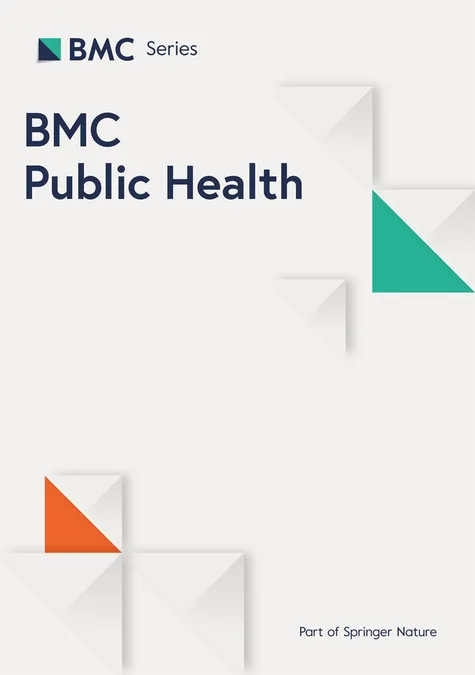
Breakthrough Discovery: Scientists Unmask Protein’s Role in Hepatitis A Infection!
2024-11-21
Author: Wei
Viruses have coexisted with humans for millennia, each evolving strategies to hijack our cellular machinery and survive within us. Some, like the Hepatitis A virus (HAV), are particularly adept at slipping through our defenses, often wreaking havoc without any immediate symptoms.
A Silent Threat Unveiled
Hepatitis A is a highly contagious virus primarily transmitted through close contact or the consumption of contaminated food and water. Despite an effective vaccine introduced in the 1990s, there have been a staggering 45,000 confirmed cases in the United States since 2016, leading to 424 deaths—a stark reminder of the virus's threat.
Dr. Stanley M. Lemon, an esteemed professor at UNC School of Medicine and a member of the National Academy of Sciences, has dedicated his career to studying positive-strand RNA viruses, particularly HAV. He aptly noted, “Hepatitis A virus knows the insides of a liver cell much better than we do.” Through ongoing research, Lemon and his colleagues have aimed to decode HAV's interactions with human biology, revealing insights about cellular responses, the immune system, and potential links to cancer.
A Protein's Role in Infection Unveiled
Lemon’s latest research has spotlighted a protein previously shrouded in mystery: PDGFA-associated protein 1 (PDAP1). Collaborating with a team of talented researchers at the UNC Lineberger Comprehensive Cancer Center, they uncovered how HAV employs PDAP1 as a strategic partner to facilitate its replication within liver cells. The findings, described in Science Advances, are a game changer in our understanding of virus-cell interactions.
The team achieved this breakthrough through a CRISPR screening process targeting over 19,000 human genes, eventually honing in on approximately 40 vital genes that HAV depends on for replication. Among these, PDAP1 emerged as a particularly intriguing candidate due to its unknown function until then.
Curiously, prior studies had hinted at PDAP1's association with gastrointestinal cancers and glioblastoma, but its exact role in viral infections remained largely uncharted territory. One notable study from Verónica Delgado-Benito's lab emphasized the protein’s significance in immune cells’ stress responses, igniting further exploration among Lemon’s group.
Harnessing Cellular Stress Responses for Replication
The "integrated stress response" allows liver cells to weather turbulent conditions, such as infections or metabolic disruptions, by conserving energy and selectively producing survival proteins. The research indicated that HAV had evolved to exploit this process, using the liver's stress response to its advantage.
Through meticulous experimentation, the research team knocked out PDAP1 in liver cells using CRISPR-Cas9 technology. The results were astounding: virus-exposed PDAP1-deficient liver cells failed to support HAV replication. In an animal model, mice lacking PDAP1 exhibited complete resistance to the virus, underscoring its critical role in the viral lifecycle.
Moreover, the benefits of removing PDAP1 extended beyond infection resistance; these mice also struggled to mount typical stress responses when exposed to toxins, signaling PDAP1’s integral role in cell survival during distressing conditions.
Connecting the Dots: From Viruses to Cancer
The insights gleaned from studying PDAP1 not only illuminate the mechanics of hepatitis A but also broaden the scope of its implications in infectious diseases and metabolic disorders. Dr. Lemon posited that understanding such viral interactions may reveal secrets about cancer biology, as the integrated stress response is often manipulated by cancer cells to foster unchecked growth.
With this newfound knowledge, a surge of interest in PDAP1 is expected in scientific communities focusing on protein production and cellular survival mechanisms. The intricate dance between viruses and host cells continues to unfold, promising potential breakthroughs in the fight against infections and the battle against cancerous growths.
Stay tuned! As researchers dive deeper into the enigmatic relationships between viruses and host proteins, we may yet uncover more groundbreaking revelations that could reshape our approach to a myriad of diseases!




 Brasil (PT)
Brasil (PT)
 Canada (EN)
Canada (EN)
 Chile (ES)
Chile (ES)
 España (ES)
España (ES)
 France (FR)
France (FR)
 Hong Kong (EN)
Hong Kong (EN)
 Italia (IT)
Italia (IT)
 日本 (JA)
日本 (JA)
 Magyarország (HU)
Magyarország (HU)
 Norge (NO)
Norge (NO)
 Polska (PL)
Polska (PL)
 Schweiz (DE)
Schweiz (DE)
 Singapore (EN)
Singapore (EN)
 Sverige (SV)
Sverige (SV)
 Suomi (FI)
Suomi (FI)
 Türkiye (TR)
Türkiye (TR)